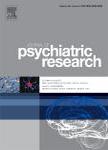版权所有:内蒙古大学图书馆 技术提供:维普资讯• 智图
内蒙古自治区呼和浩特市赛罕区大学西街235号 邮编: 010021

作者机构:South China Univ Technol Sch Comp Sci & Engn Guangdong Key Lab Multimodal Big Data Intelligent Guangzhou Peoples R China Shenzhen Kangning Hosp Shenzhen Mental Hlth Ctr Dept Depress Disorder Shenzhen Peoples R China South China Agr Univ Coll Math & Informat Guangzhou Peoples R China Shenzhen Kangning Hosp Shenzhen Mental Hlth Ctr Dept Radiol Shenzhen Peoples R China
出 版 物:《JOURNAL OF PSYCHIATRIC RESEARCH》 (J. Psychiatr. Res.)
年 卷 期:2025年第182卷
页 面:304-311页
核心收录:
基 金:Natural Science Foundation of Guangdong Province [2021A1515011942] Innovation Fund of Introduced High-end Scientific Research Institutions of Zhongshan [2019AG031] Shenzhen Fund for Guangdong Provincial High-level Clinical Key Specialties [SZGSP013]
主 题:Major depressive disorder Multimodal learning Structural MRI Arterial spin labeling perfusion MRI
摘 要:Magnetic resonance imaging (MRI) offers non-invasive assessments of brain structure and function for analyzing brain disorders. With the increasing accumulation of multimodal MRI data in recent years, integrating information from various modalities has become an effective strategy for improving the detection of brain disorders. This study focuses on identifying major depressive disorder (MDD) by using arterial spin labeling (ASL) perfusion MRI in conjunction with structural MRI data. We collected ASL and structural MRI data from 260 participants, including 169 MDD patients and 91 healthy controls. We developed an explainable fusion method to identify MDD, utilizing cerebral blood flow (CBF) data from ASL perfusion MRI and brain tissue volumes from structural MRI. The fusion model, which integrates multimodal data, demonstrated superior predictive performance for MDD. By combining MRI regional volumes with CBF data, we achieved more effective results than using each modality independently. Additionally, we analyzed feature importance and interactions to explain the fusion model. We identified fourteen important features, comprising eight regional volumes and six regional CBF measures, that played a crucial role in the identification of MDD. Furthermore, we found three feature interactions among the important features and seven interactions between structural and functional features, which were particularly prominent in the model. The results of this study suggest that the fusion learning approach, which integrates ASL and structural MRI data, is effective in detecting MDD. Moreover, the study demonstrates that the model explanation method can reveal key features that influence the decisions of models, as well as potential interactions among these key features or between functional and structural features in identifying MDD.